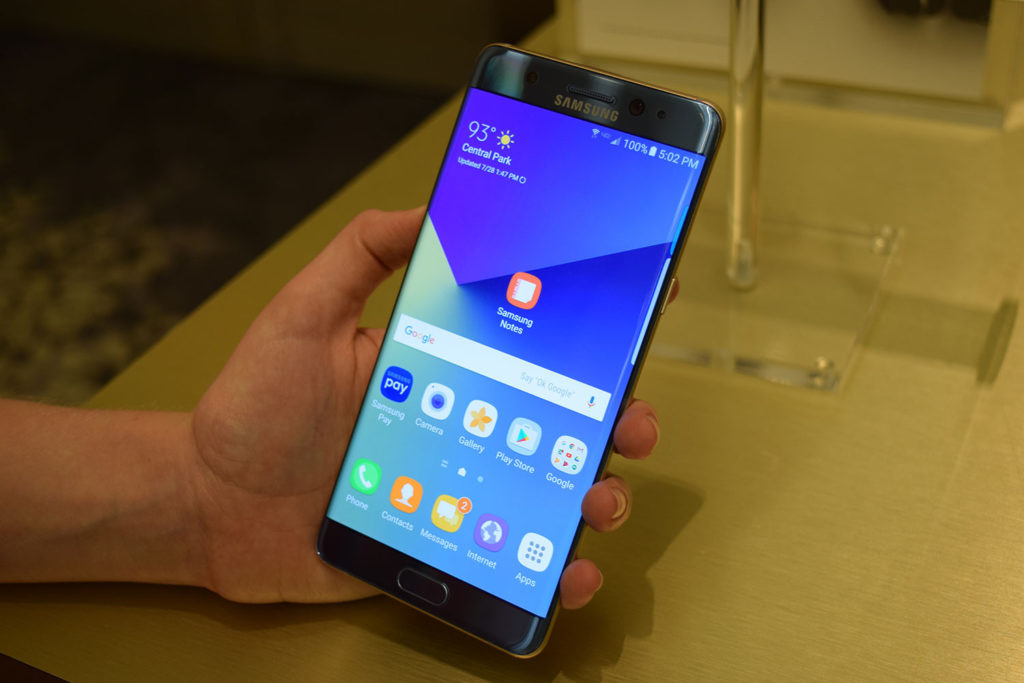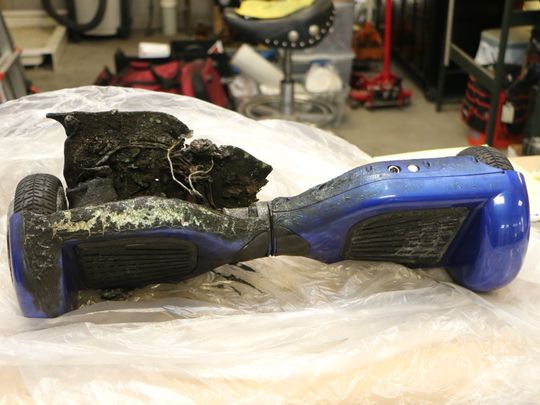
Samsung Galaxy Note 7
The burning lithium-ion batteries that caused a massive recall of Samsung Galaxy Note 7 smartphones highlight the conundrum tech companies face as they look for more powerful, lightweight and easily recharged batteries to power myriad consumer devices.
Lithium-ion batteries burst onto the scene in the early 1990s when they first appeared in hand-held video cameras. Since then they’ve been used to power everything from jets’ electrical systems to cars to the smartphones carried by billions. They’ve also caused fires and mass recalls, from last year’s hoverboard flameout to the grounding of Boeing 787s.
The batteries are attractive to device makers because they can store relatively large amounts of energy in a small space, said Jason Croy, a physicist in the Electrochemical Energy Storage department at Argonne National Labs in Lemont, Ill.
“Without Li-ion, there very likely would be no smart phones, tablets, laptops, et cetera,” he said.
Lithium-ion batteries are no more inherently dangerous than any other battery, but they are more energy dense. And the more energy stored, the potentially more dangerous a battery becomes, said Croy.
At the same time, consumers are continually demanding more power for their devices.
“They want to do more with their phones, with the laptops, they want to drive 200 miles on a charge in their electric cars,” he said.
That means lithium-ion batteries are increasingly called upon to hold more energy. The vast majority do it safely, but poorly-designed, faulty or counterfeit batteries can sometimes burst into flame, explode or simply overheat.
According to Samsung, a “battery cell issue” is to blame for for the 35 confirmed cases of the smartphones catching fire or exploding.
The batteries work by moving lithium particles between a negative and positive electrode to charge and discharge. To allow those particles to move easily, they’re suspended in pressurized cells inside the batteries filled with volatile and flammable chemicals.
The movement of the particles causes heat as the battery is charged and discharged. If the battery was badly designed or improperly used or installed, that heat can ignite the chemicals, causing flames or explosions.
Damage to the thin walls that keep the different parts of the battery separate can also lead to short circuits and a corresponding heat buildup.
A burned hoverboard. The Consumer Product Safety Commission recalled faulty devices due to problems with their batteries in 2015. (Photo: Consumer Product Safety Commission)
While overall very safe, the literally billions of lithium-ion batteries in use worldwide mean there have been several newsworthy failures over time.
In June, HP issued a recall for some HP and Compaq laptop computer after it was found that their battery packs could overhead.
Self-balancing hoverboards powered by often poorly-designed or installed lithium-ion batteries have been responsible for more than 100 fires. Half a million of them were recalled by the Consumer Product Safety Commission.
In 2013 fires in two 787 Dreamliner jets caused by a short circuit in lithium ion batteries led Boeing to redesign the plane so that each battery was housed inside an insulated, vented and fireproof steel box.
Lithium-ion batteries were also implicated in at least two fires in Tesla electric cars after they ran over road debris that damaged the battery pack under the vehicle. The car company added three underbody shields to the Model S to further protect the electric cars’ batteries from impacts.
via:usatoday








